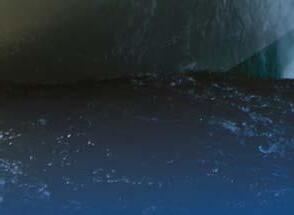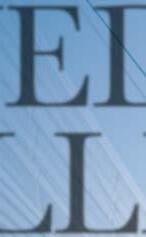













































































After a long and chequered history, the 12-M yacht and icon of Sweden, Princess Svanevit, has returned home and is once more sailing the waters of the Stockholm archipelago
STEFAN IWANOWSKI AND RON VALENT PHOTOS

WORDS AND PHOTOGRAPHS BY NIGEL SHARP
After strong winds forced the cancellation of the first race, the following five days produced good sailing breezes (albeit after a couple of postponements) for the 35 boats taking part in the British Classic Yacht Club Regatta at Cowes.



The three IRC classes started and finished their races on the Royal Yacht Squadron Line while eleven 6-Metre yachts raced over mainly windward/ leeward courses in the north Solent. The two Spirit 52s dominated Class I, with Christian Oldendor ’s Happy Forever winning overall followed by Sean McMillan’s Flight of U ord; in Class II, Giovanni Belgrano’s 1939 Laurent Giles Whooper came within one race of a clean sweep of race wins with Michael Briggs’ 1904 Clyde 30 Mikado second overall; and not only did Andrew Gilmour’s Stella Timoa win Class III (with BCYC Commodore Jonathan Dyke’s 1938 Robert Clark Cereste in second place), but she was also the overall winner of the Nab Tower race.


In the Long Inshore Race, sponsored by Classic Boat, there were class wins for Happy Forever, Whooper and Cereste Whooper also won the Lady Helm Race with Rosie Parkes on the tiller. Meanwhile the overall winners in the 6-Metre classes were Henrik Anderson’s Oiva (Open Division) and Simon Williams’ Abu (Classic Division).









Bequia’s last schooner has been through a lot in 44 years, including a builder who set fire to her and an owner who sank her. Today she has found a new owner – and peace

Is it just me, or when you see a classic boat, it feels as though you glimpse her multiple lives, like looking at the weathered, gnarled face of an old fisherman? Not that I’m saying that this boat is gnarly (although she is a little bit) but her gunwales, her lashed, exposed rudder, her handmade boom and her rough capping rail, all hint at her rich history and her colourful stories. Although at 44, some would consider her quite a youngster still.
Much younger still, were Sandy and her sister, barely in their 20s, when they arrived for a holiday on the Caribbean island of Bequia in the late 70s. They had both worked on the schooner America and had made friends there, so they decided to take the mail boat down-island from Puerto Rico for an adventure. Sandy did not know then quite what an adventure it would turn out to be...
Bequia means “Island of the clouds” in Arawak. It was, in those days, although really not much different today, a quiet, sparsely-populated island steeped in the tradition of boatbuilding, fishing and aboriginal subsistence whaling. Being just seven square miles (c18km2), fresh produce, tools and materials all came from Saint Vincent on the sailing cargo vessel the Friendship Rose among others. These cargoes required strong, seaworthy boats that could reach north across the Vincy Channel where the trade winds whip up the waves into steep, short, breaking seas. These boats were built on the beach with the rudimentary dimensions of length, beam and draught – no plans, no scientific calculations, no lofting and no model. When a significant piece of wood that would form a particular curve of a vessel was needed, a trip to the hills was taken to find the right tree to fell. Saplings, stripped of their branches, would then be lain down on the ground to act as rollers for these large logs.
In 1976, Sandy met Robert Luke, known to all as Deadly, and soon they started dreaming of building a boat. They may have referred to Howard Chapelle’s book American Small Sailing Craft when they had in mind to build a cowhorn schooner, or Block Island double-ender as it was originally called. These vessels were designed with a shallow keel to sit easily on the hard between tides: no cabin house, no bowsprit, no jib, and rocks as ballast, to be thrown overboard and replaced with fish. They were very seaworthy, going out and coming home safely in weather that ruined much larger sailing vessels.


Sandy and Deadly frequently joined the crew of the Baltic Trader Jens Juhl, carrying cargoes from Trinidad. It was aboard one such trip that they met Chris Bowman who was building Bob Dylan’s 67ft (20.4m) schooner, later named Water Pearl, on the other side of the harbour (CB419).
While much of the wood for the Bequia schooners is sourced locally, silverballi is said among some West Indian shipwrights to be the best wood with which to build boats. Silverballi was impossible to procure from Bequia, so instead it came from Guyana, 500 miles to the south, then a communist state ruled by a tough dictator. It was a challenging place to do business and Georgetown was a dangerous capital. Chris Bowman tells me this was the hardest part of building the Water Pearl. A group from Bequia went up into the hills in search of the best trees. These trees have a central water channel and the experts go
Gordon Currey is the son of Charles Currey, an Olympic medallist and one of Fairey Marine’s founding directors. Gordon has inherited his parents’ collection of pictures and press cuttings that chart his father’s illustrious sailing career from winning a Finn class silver medal at the 1952 Olympics, to racing International 14s, developing the first trapeze, and his continued success during the early offshore powerboat racing scene that began with the 1961 Cowes Torquay Race. Entwined within this archive lie the records of Fairey Marine, the company born from Fairey Aviation’s redundant wooden Mosquito airframe factory at Hamble immediately after World War II that transformed the then secret hot moulding autoclave technology to mass produce a wide range of sailing and motorboats at affordable prices.
Above: Fairey Marine power cruisers won 148 racing awards including the London-Monte Carlo and Cowes-Torquay races. 1969 was a great year with a tally of 54 trophies. This racing pedigree makes them cherished today

This reprise of the Fairey Marine story coincides with the 67th start of the annual Cowes/Torquay power boat race, that started from Cowes on Sunday 27 August, an event that established the Ray Hunt designed Fairey Huntress, Christina and Huntsman power cruisers, and later the Alan Barnard designed Swordsman 33 as true all-weather power cruisers. Thunderbolt, a Christina derivative of the Huntress 23, driven by Tommy Sopwith and Geoff Fanner won the first race in 1961 at an average speed of 21.3kts.
Charles Currey and co-director Peter Twiss, the Fairey test pilot who set an outright air speed record of 1,132mph back in 1956 flying a Delta 2 experimental fighter jet, proved to be just as canny, piloting these Huntsman and Swordsman boats, to win a lion’s share of the silverware. They did so, by positioning their
boats close to much faster race boats at the start, then rode their wakes all the way out of the Solent to give themselves a healthy lead over class rivals.
It helped that the hierarchy within the Fairey Aviation group were all keen yachtsmen. Sir Richard Fairey (pictured below), who had raced his J-Class yacht Shamrock V from Cowes before the War, took up racing the 12-M Flica after peace was declared, and was Commodore of the Royal London YC at Cowes. Managing Director Colin Chichester-Smith was a keen International 14 sailor who as a former Royal Navy aviator, had pioneered the conversion of destroyers and commercial ships into aircraft carriers, and developed the first torpedo bombers during World War I. Alan Vines, the Group’s Technical Director, was equally innovative and shared their passion for sailing.

“There has been a lot of rubbish written about the Company and its products,” Gordon asserts. The first misnomer is that Fairey Marine began life building Firefly racing dinghies. “No, it was a series of folding canvas boats, canoes and Commando landing



Above
craft developed at the tail end of the World War II. They all folded down to fit in the boot of a car or through a conning tower hatch. It were these wooden framed canvas boats that first seeded the idea of utilising Fairey’s aircraft manufacturing plant at Hamble to build boats,” he says, pulling out a picture from a box filled with company memorabilia. “See…It’s captioned on the back of this picture – ‘Alan Vines. First folding boat built as Hayes; Start of Fairey Marine.’”
One of these, a canoe designed to ride the surf on west country beaches with a Fairey Marine logo emblazoned on its bow, has been on display at the National Maritime Museum, Cornwall, together with the original pamphlets, and another, still in a seaworthy condition, has recently been advertised on eBay for £140.
Thumbing through Gordon’s dusty boxes of pictures and ‘flimsies’ – the carbon copies of important records tracking costs, exports and upgrades to a 25-strong range of hot-moulded wooden sailing and motorboats that would eventually make up the range of Fairey Marine manufactured boats, provides a fascinating walk through three decades of history of what was once Europe’s largest mass production boat builder. Sadly, the Fairey Group fell into receivership in 1975, pulled down by the failure of Rolls-Royce and its RB211 jet engine four years earlier which led to a huge shake-up of the entire British aircraft industry. The Fairey business was absorbed into a new group later called FBM Marine which also included Allday Aluminium, Brooke Marine, Cheverton Workboats, and Fairey Marinteknik, producing Waveney class lifeboats for the RNLI. The group was then acquired in 2000 by Babcock International and renamed FBM Babcock Marine Ltd to specialise in the defence sector worldwide. Fairey’s base at Hamble was developed into a marina now operated by MDL, and the name lives on in the form of an opportune reregistration of Fairey Marine Ltd and its logo back in 2012, a separate company now based in Southampton offering restorations and new builds of classic Fairey styled powerboats.
 This page: Blue Eye sailing
Opposite page left: Blue Eye under spinnaker with James in the cockpit
Opposite page below: The Anambas Islands
This page: Blue Eye sailing
Opposite page left: Blue Eye under spinnaker with James in the cockpit
Opposite page below: The Anambas Islands